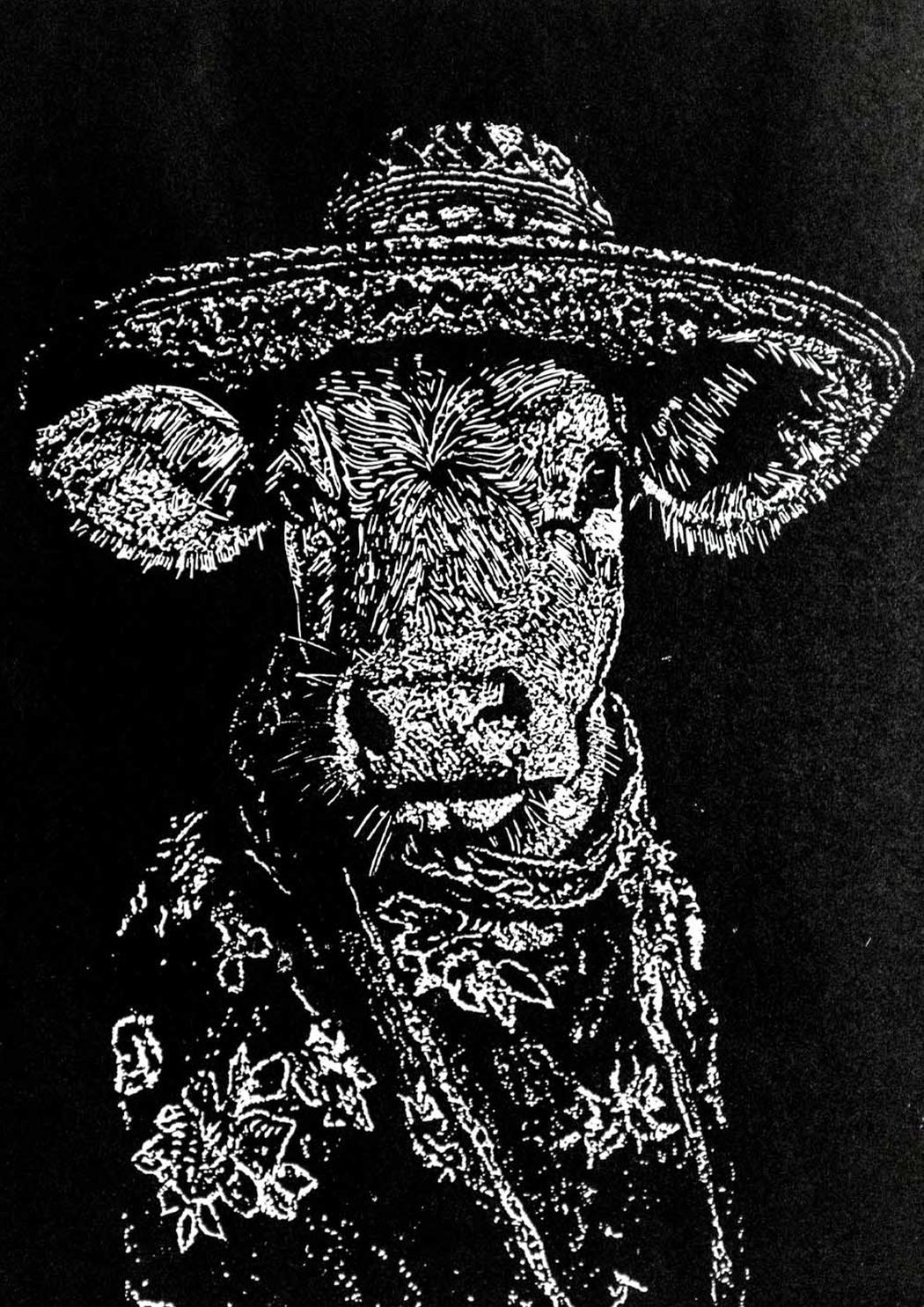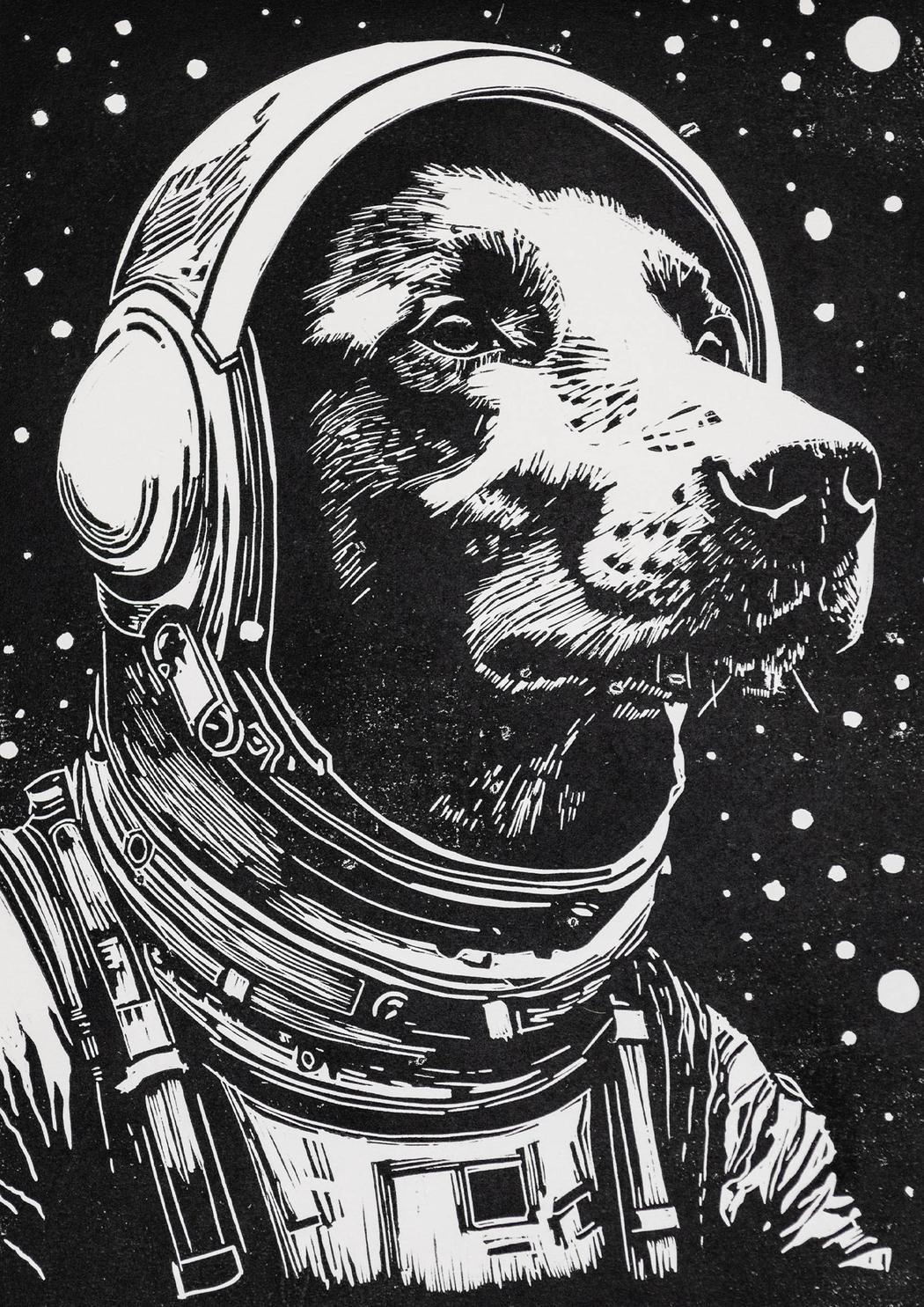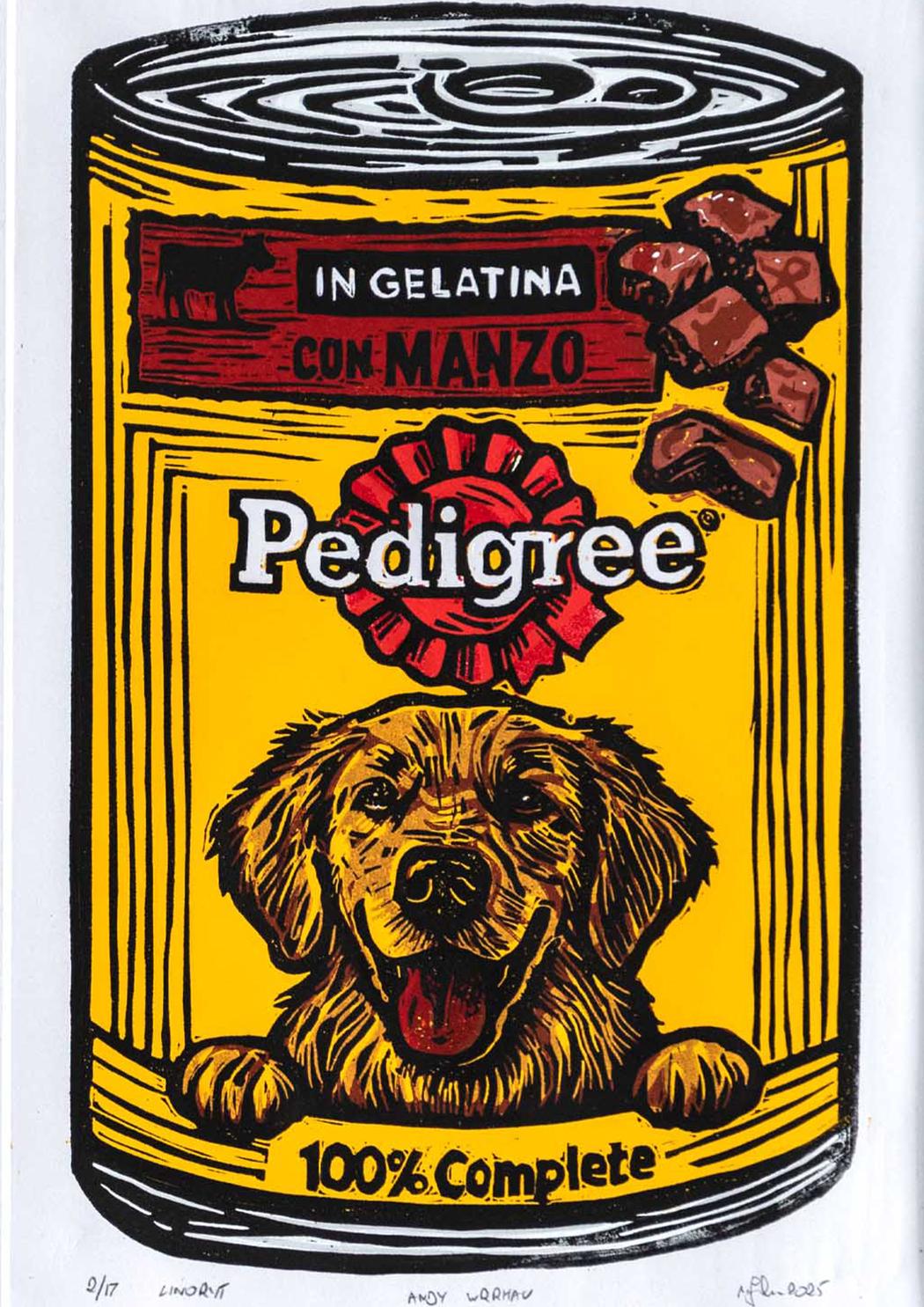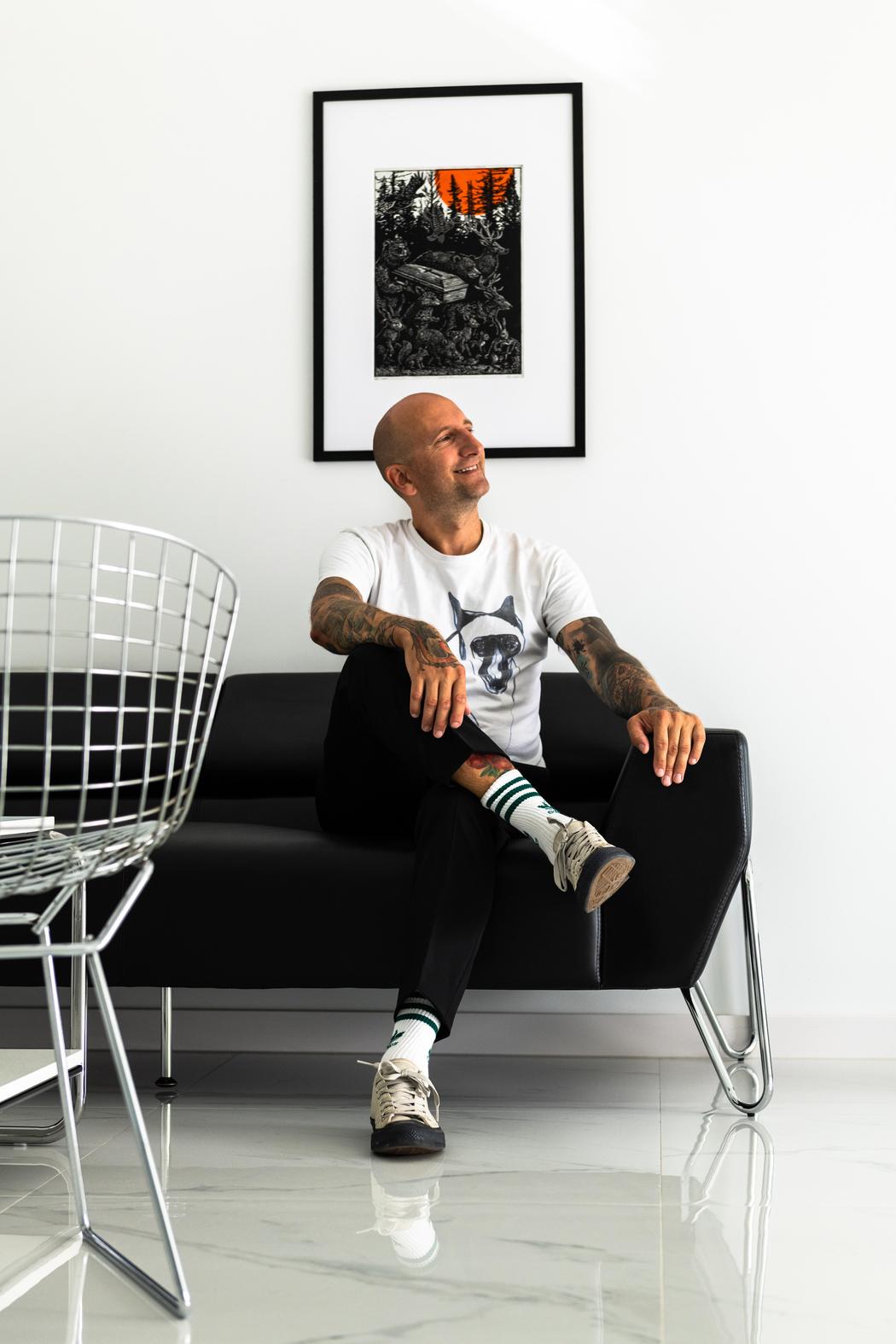Marcin Jucha
Could you tell us about your first encounter with linocut and cyanotype? What drew you to these specific techniques?
I first tried linocut back in primary school, but honestly, I didn’t touch it again for decades. For many years I worked professionally as a photographer, and at some point, I started feeling the need for something different, something more hands-on, something that would let me slow down a bit. I wanted a process that required precision, patience, and the kind of focus that only comes when you’re fully in the moment, working with your hands.
Cyanotype came later, and it felt like a natural step in my photographic journey. It’s still about images and light, but it’s also about chemistry, time, and unpredictability. Unlike digital photography, it forces you to think and work differently, more like a craftsman in a studio than a photographer behind a screen. In both techniques I’ve found a balance between control and surprise, which keeps me coming back to them every day.
Your works often combine humor, pop culture, and everyday life with deeper layers of history and symbolism. How do you balance the playful with the profound?
For most of my life, art felt a bit too serious and complicated to really connect with. I’ve always preferred things that are light, funny, or simply pleasant to look at. When I eventually started creating art myself, I realized there are many people like me – people who want meaning, but don’t necessarily need it wrapped in heavy theory or highbrow symbolism.
So I try to build that bridge, to say something that can make you smile first, and then maybe think a little deeper afterward. Humor and pop culture are just tools, but underneath them there’s usually something more personal or reflective. I like when a piece can work on both levels, you can enjoy it for what it is, but if you stop for a second, there’s a story waiting underneath.
Photography seems to play a key role in your practice. How does your background as a professional photographer influence your printmaking and cyanotypes?
Printmaking, in a way, became the opposite of photography for me. Everything I was missing in photography, I found there, the physical work, the tools, the smell of ink, the slow and deliberate process. It brought back that sense of craft and connection that’s easy to lose when you spend years behind a screen.
Cyanotype, on the other hand, was a natural next step in my photographic path. As a commercial and stock photographer, I was used to working fast and efficiently, but I started craving something slower – a way to spend more time with a single image, to really live with it. Cyanotype lets me do that. It’s not about sharpness or perfect white balance anymore; it’s about emotion, light, and the imperfect beauty that appears when you let go of control.
 Marcin Jucha | Muuchacha | 2025
Marcin Jucha | Muuchacha | 2025
Dogs appear frequently in your linocuts. What role does your own dog play in your artistic process and storytelling?
I’d dreamed of having a German shepherd dog since I was a kid, and when it finally happened, my world turned upside down, or maybe right side up, just with paws on top. She completely changed how I saw things. I started to understand what really matters in life and how important it is to follow your passions. Around that time, I decided to fully dedicate myself to photography and make it my main path.
My dog, Kila, was my biggest support through all those years, a quiet presence that somehow gave me direction. We were inseparable, so it felt natural that she became one of my greatest inspirations. After 14 years together, she passed away this February, and I made a linocut called Danse Macabre in her memory. Her spirit still finds its way into my work, and I think it always will.
 Marcin Jucha | Lajka | 2024
Marcin Jucha | Lajka | 2024
Many of your works carry a sense of irony or absurdity. What inspires this approach, and how do you see the dialogue between the sacred and the absurd?
I think irony and absurdity are just part of how I see the world. Life itself is often a strange mix of beauty and nonsense, you can’t separate one from the other. I like to capture that tension in my work. Sometimes something that looks funny at first might hide a bit of sadness or truth underneath, and I enjoy that contrast.
As for the sacred and the absurd – I don’t really see them as opposites. To me, they exist side by side all the time. The most ordinary moments can feel almost spiritual, and the so-called “serious” things often turn out to be kind of ridiculous. Maybe that’s why I’m drawn to this in-between space, where humor and reflection meet and start a quiet conversation.
Your work seems to exist at the crossroads of tradition and contemporary culture. Where do you see printmaking evolving in the future?
This technique has been with us for hundreds of years, and I honestly believe it’s here to stay. It might sound obvious, but in the age of artificial intelligence and advanced digital printing, handmade printmaking is actually gaining new life, both among artists and collectors. There’s something deeply human about it, something that can’t be replicated by machines.
Of course, the narrative is changing. We’re seeing more mixed and experimental methods, but the foundation remains the same – that tactile, traditional craft. I think the future of printmaking lies in this dialogue between the old and the new: combining traditional processes with digital tools or personal, hybrid techniques that reflect the artist’s own story.
 Marcin Jucha | Andy Wrrhau | 2025
Marcin Jucha | Andy Wrrhau | 2025
Finally, what projects or themes are you currently exploring, and what can we expect next from your artistic journey?
Right now, I’m working on a linocut about the complicated relationship between people and bears in my country, especially in the Bieszczady Mountains. It’s sort of a continuation of my earlier work The Hunter’s Funeral, which carried a clear anti-hunting message. At the same time, I’m still expanding my series Great Artists – Under the Dog, which already includes five linocuts, and I’m continuing my collection of famous animals like Laika, Hachiko, and Jumbo.
Since quite a few of my collectors are between five and twelve years old (laughs), there will definitely be some happy dogs and cats too. I also want to appear more often at exhibitions, including international ones – to open up a bit more to the world. And I plan to return to designing socially themed posters, of course in my own way. But above all, I just want to keep enjoying what I do and continue creating with the same curiosity and joy that got me started in the first place.


Leave a Reply